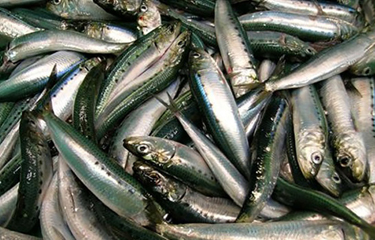Oceana sues NMFS over California sardine management

Alleging that U.S. West Coast fisheries managers are repeating mistakes of the past half-century, the environmental group Oceana is suing NMFS over its approval of the latest sardine management plan and demanding more action to rebuild the stock.
“Despite these hard lessons, NMFS repeats these management failures in Amendment 18,” states the group’s complaint, filed by the legal group Earthjustice on 14 July in the U.S. District Court for Northern California, naming U.S. Commerce Secretary Gina Raimondo, NOAA, and the fisheries agency.
Oceana claims NMFS should not have approved the Pacific Fishery Management Council’s amendment to the coastal pelagic species management plan, allowing managers to “chose a suite of already disproven, status-quo management measures that will keep this population at levels too low to support either the ecosystem or the primary fishery that relies on sardine for half a century or more.”
“Basically, we’re dealing with a rebuilding plan that’s not designed to rebuild,” said Geoff Shester, senior scientist and California campaign director for Oceana.
Environmental activists, managers, and fishermen have long been at odds over the U.S. sardine fishery, foundation of the historic California cannery industry that collapsed in the 1950s and stayed closed until 1974. Sardines were found in 2019 to be overfished, but fishing advocates say offshore surveys are missing large amounts of fish.
Managers now recognize that the sardine stock size is primarily driven by environmental factors, and that there is inadequacy of surveys used in assessments, according to Diane Pleschner-Steele, executive director of the California Wetfish Producers Association.
“Oceana just refuses to acknowledge the reality,” Pleschner-Steele said. “We’ve been arguing for years that the surveys don’t capture the [accurate number] of fish.”
The accusation of “status quo is misrepresenting management,” Pleschner-Steele said. The council and NMFS need flexibility to improve surveys and assessments, monitor environmental factors, and consider the fishing community needs with “the only reasonable rebuilding plan,” she said.
“It’s a balancing act between the biology of the fish and the well-being of the fishing community,” she said.
Managers have been using models based on northern and southern sardine stocks and linking most of the allowable biological catch to the northern stock, said Pleschner-Steele. But she said newer analysis has shown virtually all catches come from the southern stock, which also fuels a robust live-bait fishery supplying the recreational sector.
Shester said the fishery may account for 50 percent or more of the catch and needs a closer look, too. Back in the 1950’s and 1960’s, fisheries managers trying to guide a recovery gave wide allowances to the bait fishery, and “that was recognized as a big mistake,” he said.
There’s no question that sardine levels are driven by environmental conditions, but “the question is what does fishing do on top of that?” Shester said. “When the [sardines] move into these low levels, that’s not sustainable.”
Efforts to build cooperative surveys were sidetracked in 2020 with COVID-19, but work is underway again with the California Department of Fish and Wildlife on acoustic trawl and aerial surveys, said Pleschner-Steele. Work so far this year has found large numbers of fish, she said.
“I’m hoping we’ll be coming to an update of the stock assessment by the end of the year,” she said, that could get the fishery “out of overfished jail.”
Reporting by Kirk Moore
Photo courtesy of NOAA






Share